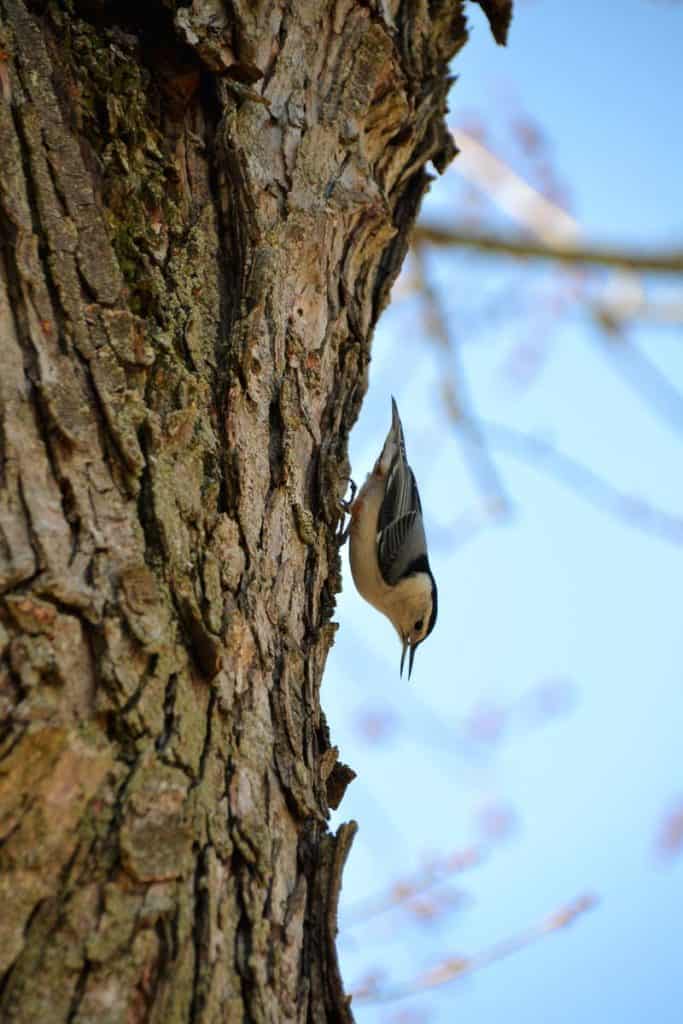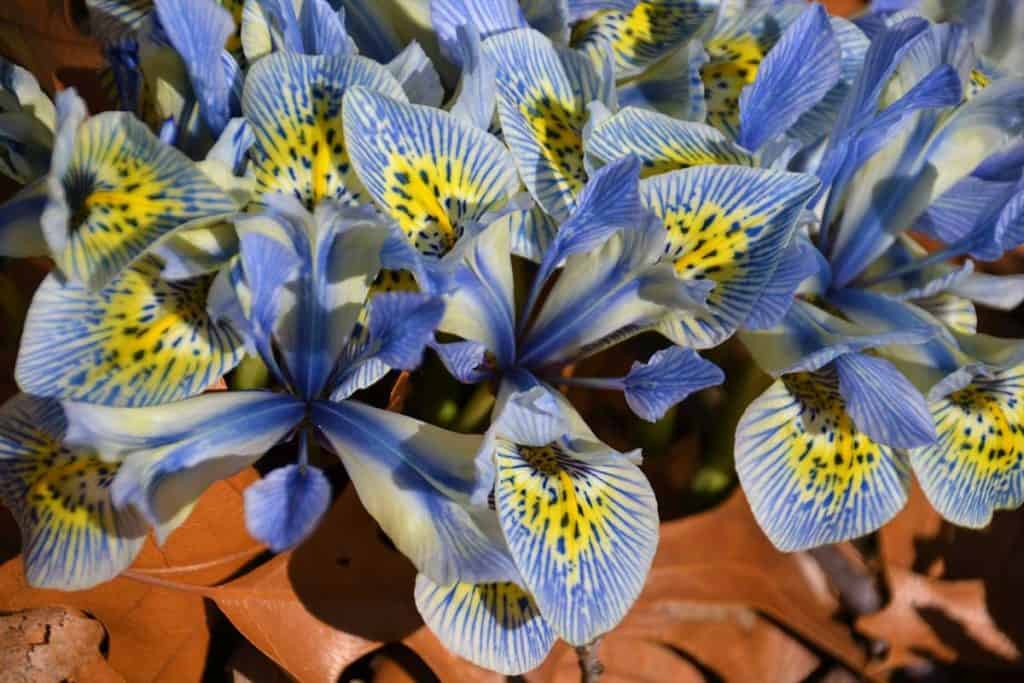Here’s what’s blooming in town this week to make your walks more enjoyable
My apologies to Tonya Chadwick for misspelling her name last week! Her festive St. Patrick’s Day front lawn was featured on the front page of The Advocate.
Birds are singing, and male goldfinches are changing up their look for spring – developing bright yellow breeding plumage while females remain a more camouflaged beige. Other birds, like nuthatches, are newly hopeful of finding some insects for a change from their winter diet of seeds. While we might not yet be able to stop and smell the roses, unless they are in a bouquet, there are a few flowers blooming outdoors now that have appealing fragrances, and more will soon be following. The early bulb irises, including the beautiful ‘Katharine Hodgkin,’ have a lovely scent, somewhat similar to later iris species. Hybrid witch hazel, a very early blooming shrub, also has a distinctive and refreshing scent. Crocuses, snowdrops, winter aconite and pussy willows, all seen blooming around town, have much less noticeable scents, but it is lovely to see flowers blooming outside. The pussy willows, being wind pollinated, don’t really have a use for scent which can attract pollinators, but occasionally early bees and other insects will discover the warmth in the fuzzy catkins.
The dwarf iris ‘Katharine Hodgkin’ (Iris histrioides ‘Katharine Hodgkin’) is now in full bloom. It is very low to the ground but is a delightful combination of bright blue and yellow spotted with darker blue-purple. I first saw this unusual rock garden iris at the Berkshire Botanic Garden decades ago when I went there to give an early spring talk. A little more well-known rock garden irises are the bright yellow Danford iris (Iris danfordiae) and the deep blue netted iris (Iris reticulata). All three are native to Turkey and some bordering countries. In addition to being good additions to rock gardens, since they hug the ground, tolerate summer drought and don’t require very deep soil, they are among the earliest of spring bloomers. They grow from small bulbs, unlike most late spring and early summer blooming iris species, and their leaves grow for a few more months after bloom and then become dormant.
Why don’t we see more very early spring plants being used in gardens? It may be because they bloom before the ground is thoroughly thawed and planting time begins in the spring. Most nurseries are not fully stocked in March because it is too early to plant, so by the time people generally go shopping for new garden plants, these species have finished blooming for the year. Many homeowners will bypass a plant that is past blooming. Sometimes decisions are made on the spur of the moment, so May flowers get all the attention. This is a large part of the reason why most home gardens are full of late spring and early summer flowers but lack species that bloom in very early spring or in the fall.
A walk in the woods, especially along a pond bank or near a stream or low ground where rainwater collects, may result in the discovery of silvery pussy willow catkins. When the weather warms up, the bright yellow pollen will be evident on the male catkins, but before that point they can be very ornamental, and bouquets of dry catkins are sold in many florist shops. If dried at the proper point in their development, they can actually remain for years – I put mine in a closet every year until after Christmas, when they are brought out as a long-lasting reminder of the charms of early spring.
Editor’s Note: Laura Eisener is a landscape design consultant who helps homeowners with landscape design, plant selection and placement of trees and shrubs, as well as perennials. She is a member of the Saugus Garden Club and offered to write a series of articles about “what’s blooming in town” shortly after the outbreak of the COVID-19 pandemic. She was inspired after seeing so many people taking up walking.






